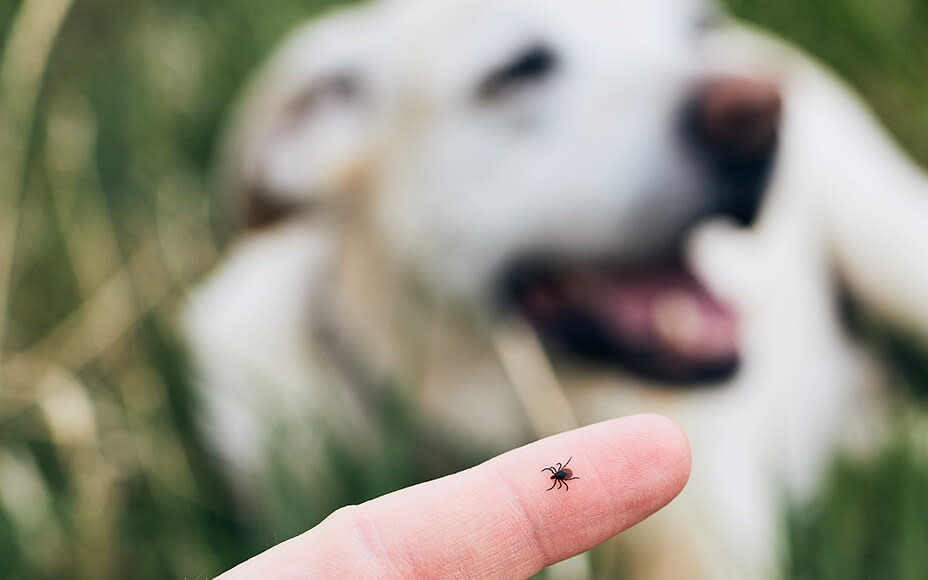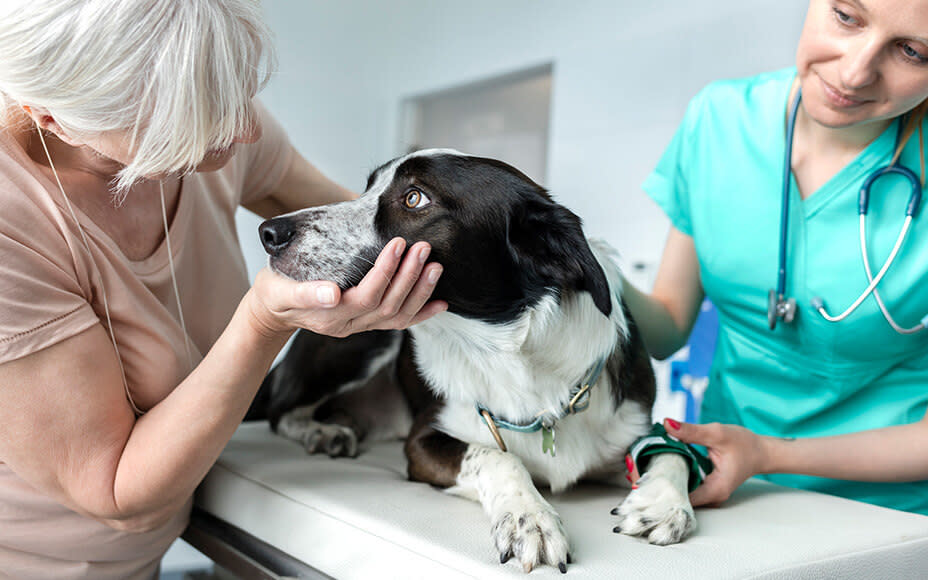Lyme disease is a serious illness that can also be transmitted to dogs through ticks. Learn all about the symptoms and how vaccination can protect your dog.
- Lyme Disease in Dogs: How Vaccination Protects Against Tick-Borne Illness
- What is Lyme Disease in Dogs, and how vulnerable is my furry friend?
- Symptoms of Lyme Disease in Dogs
- Diagnosis and Treatment of Lyme Disease in Dogs
- Prevention: Vaccinating Dogs Against Lyme Disease
- Is Vaccination the Solution Against Lyme Disease in Dogs?
- Lyme Disease and Long-Term Effects: What Awaits My Dog?
Lyme Disease in Dogs: How Vaccination Protects Against Tick-Borne Illness
As soon as temperatures reach the 46.4° Fahrenheit mark, ticks become active again, often carrying a host of transmissible diseases. Similar to us humans, dogs can contract Lyme disease through a tick bite. The tricky part is that the disease doesn’t always manifest immediately, often progressing gradually and potentially leading to long-term effects in your dog. Learn everything about the symptoms, treatment options, and how vaccination against Lyme disease can protect your dog.
What is Lyme Disease in Dogs, and how vulnerable is my furry friend?
Borrelia are bacteria transmitted through various tick species that enter your dog’s body when a tick bites into its skin and starts to feed on blood. Belonging to the spirochete bacteria, they quickly spread throughout the entire body, with a primary target: the joints and, later on, the organs. Transmission doesn’t occur immediately when the tick attaches. The danger of Borrelia transmission exists only within a time window of 16 to 24 hours.

Once Borrelia are transmitted, your dog’s body starts producing antibodies. However, a positive antibody test doesn’t necessarily mean your dog is genuinely infected, as not every infection leads to symptomatic illness. It’s also possible for Borrelia to reside in the skin and tissue, from where they can become active and cause illness even years later.
But does this mean that every tick potentially transmits Borrelia? Good news: No, the transmission rate depends on the region where you and your dog are located.
Symptoms of Lyme Disease in Dogs
Do you suspect that your dog has contracted Lyme disease through a tick bite because you removed a fully engorged tick or your dog is behaving differently than usual? Dogs rarely exhibit symptoms immediately after transmission. Some infections remain silent or show signs only after 2 months or more. Only 5-10% of dogs bitten by an infected tick develop symptoms, including:
- Loss of appetite
- Lethargy
- Fever
- Swollen lymph nodes
- Movement problems due to affected joints
- Mild redness of the skin around the bite site (rare)
Unfortunately, the symptoms are not always specific. In particular, fever and lethargy can also indicate Anaplasmosis in dogs, which is also transmitted by ticks.

Diagnosis and Treatment of Lyme Disease in Dogs
For diagnosis, the Lyme disease test is conducted in the laboratory to ensure that there is indeed an illness. A diagnosis can be made if your dog’s blood shows antibodies against Borrelia. However, this can only confirm that your dog has been exposed to Lyme disease at some point in its life; it doesn’t necessarily mean an active illness.
If your furry friend is showing symptoms, veterinarians assume that your dog has recently been infected, and the disease has manifested. The usual course of action involves antibiotics (e.g., Doxycycline), administered for an extended period of about 4 weeks. Borrelia are tricky critters that tend to spread again in the body if the antibiotic is discontinued too early. The success of the treatment depends on early detection of Lyme disease.
Your four-legged friend has been prescribed those unappetizing pills and is far from voluntarily snacking on them? With our iHugDogs liver pâté, you can effortlessly administer antibiotics and other medications directly into your furry friend’s body. Nothing can go wrong with this delicious assistant!
Prevention: Vaccinating Dogs Against Lyme Disease
Effective prevention is crucial to protect your dog from Lyme disease in the long run. Here are some things you can consider:
- Tick Removal: Don’t just grab the ticks by the head with tweezers to remove them. It’s important to properly remove ticks from your dog using tick tweezers or a tick card.
- Use Tick Protection: Whether it’s spot-on treatments, tick collars, or tablets, there are suitable products that effectively help against ticks and protect your dog.
- Check for Ticks: After every outdoor walk during tick season, thoroughly check your dog for bloodsuckers. Early-detected ticks have little chance of transmitting Borrelia to your dog.
Is Vaccination the Solution Against Lyme Disease in Dogs?
Unlike for humans, there is a vaccination against Lyme disease for dogs. According to the Advisory Committee on Immunization Practices (ACIP), vaccination is recommended for dogs that spend a lot of time outdoors, especially in areas where the pathogen is prevalent.
If a vaccinated dog is bitten by a tick carrying Lyme disease, the antibodies formed through vaccination can often prevent the disease. However, since every dog produces a different number of antibodies, vaccination does not provide 100% protection, and preventive measures with tick protection are still crucial. Before vaccination, it is also necessary to ensure through a quick test that antibodies are not already present.

Lyme Disease and Long-Term Effects: What Awaits My Dog?
A common long-term effect when dogs contract Lyme disease is kidney inflammation. Especially when the pathogen goes undetected in your dog’s body for a long time, the organs are affected later on. If the pathogens have already embedded in the skin and tissue, it’s unlikely to completely eliminate them with an antibiotic. Often, dogs have to live with chronic Lyme disease, which is treated whenever disease episodes with movement restrictions occur.
Since Lyme disease affects the nervous system, in rare cases, it can be fatal for dogs. Comprehensive prevention and secure tick protection are therefore essential for your dog’s well-being.


